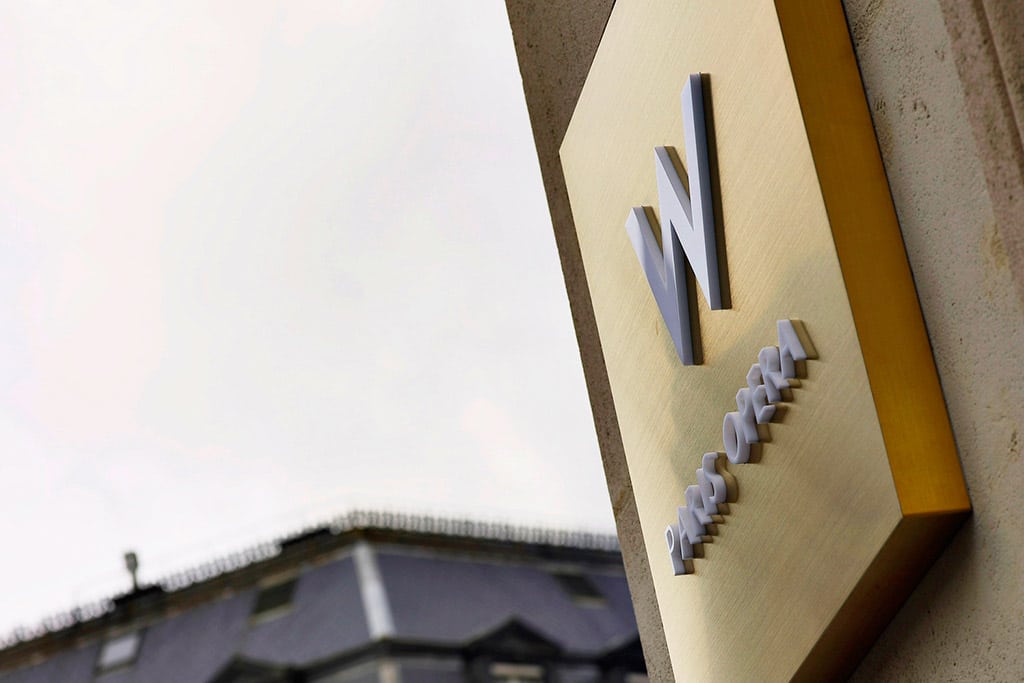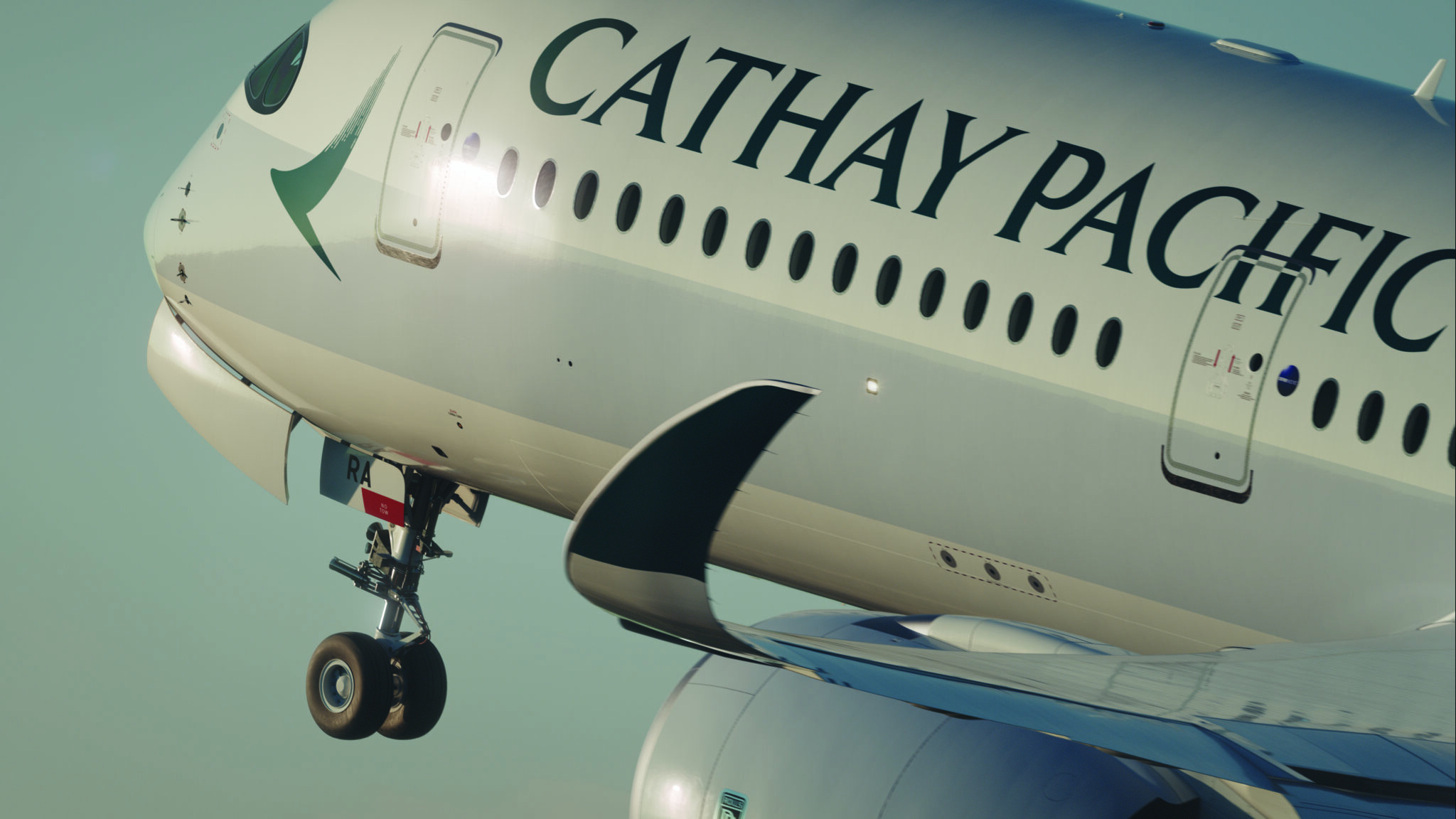Marriott-Starwood Investor Call: Anbang's Deal Was 'Very Real'

Skift Take
Less than 24 hours after it was announced that Anbang Insurance Group and its consortium decided to abandon their last-minute efforts to acquire Starwood Hotels & Resorts, the CEOs of Marriott International and Starwood hosted a joint investors call from the Marriott Marquis in New York to discuss their plans to become the world's largest hotel company, with more than 5,500 hotel properties and 1.1 million rooms worldwide.
Unless another last-minute takeover bid is offered before April 8, or their shareholders don't approve the new deal, both companies are back on the path to becoming one entity. And to ensure the value of their new deal and that it actually closes, both companies are urging their respective stockholders to approve their new agreement, valued at $13.3 billion, on April 8.
Here are some highlights of what Marriott CEO Arne Sorenson and Starwood CEO Thomas B. Mangas said to make their case to stockholders:
Marriott's Sorenson is still "enthused" and "thrilled" about the deal, even though it's paying more for Starwood. Sorenson said, "We ended up with a proposal that we thought was a very strong deal for us. We admit is was not as good a deal for us as the one we announced in November. Anbang's arrival on the scene did require us to increase our price."
Anbang is "formidable," their $13.2 billion offer was very real, and this probably isn't the last time we'll hear of them in the U.S. hospitality industry. Throughout the presentation, Mangas used that term to describe Anbang, and he made it clear that Anbang very well could have financed a newer, more expensive deal. It's just that, this time around, it decided to walk away.
"Having sat across the table from [Anbang] chairman Wu [Xiaohui] and Anbang, they are a very formidable and an incredible counterparty here that had delivered a superior bindind proposal and I want you to know that, having seen them in action, they are very credible," Mangas said. "They moved mountains to persuade our board, and they move quickly, and were incredibly shrewd in how they worked with us to get a deal done quickly."
Mangas later added that Anbang walked away from the deal amicably and said "they were consummate professionals, and they handled this process with great skill and they brought in advisors to help them. We believe they were capable of replicating what they had the first time around, but we never got that far."
Mangas also seemed to be telling Starwood shareholders that while the board was hoping to get more money from a deal with Anbang, the current deal with Marriott is "the only one on the table" and it's still a good one. Mangas said, "I wanted to assure that we worked in good faith to drive as much value for our shareholders as we could and certainly we were disappointed when we couldn't take a final step and they withdrew from the process yesterday as you saw but all along our shareholders have been encouraged to support the Marriott deal and we continue to support the Marriott deal as the best deal for our shareholders."
Mangas, when asked about the other partners in Anbang's consortium, said they "were fully involved in all the diligence." He said that while he was not privy to knowing exactly how they would split the cost of a deal among them, he was told that Anbang would provide the majority of the capital for the deal. "All three brought unique skills to the table, particularly skills in deal making in the U.S. They had brought a fully financed deal with a major top 10 bank in the world to the table."
Sorenson, who did not communicate with anyone from Anbang or its consortium throughout this process, said, toward the end of the presentation, "I hope I'll have the chance to meet the chairman of Anbang one day." He added, "You have to take someone who shows up with that $13-billion-plus deal with respect. They've obviously got resources. We'll see how they choose to put those resources to work."
The loyalty programs were No. 1 on Sorenson's wish list. As Sorenson expressed in his earlier appearance this morning, April 1, on CNBC, the power of a combined loyalty program drawing on Marriott Rewards and Starwood Preferred Guest (SPG) are the biggest prize in this deal.
"We think we can create a company which satisfies that much more of what every traveler is looking for," Sorenson said. "We think we have the real possibility of saying to folks 'You don't actually need to belong to any other hotel loyalty program' because we have the ability to satisfy you no matter the purpose of the travel or no matter the place that you're going."
Sorenson noted how impressed he's been by the passion and loyalty demonstrated by SPG members, as well as members of Marriott Rewards, and he said the eventual combination of both programs will be a win-win-win situation for both the companies, the hotel owners, and for customers over all. With SPG and Marriott Rewards combined, SPG members now have access to 4,500 more hotels around the world to stay in, and Marriott Rewards members will have an additional 1,300 hotels to choose from. "This combined company will capture more share of wallet from Starwood companies."
Previously, Sorenson has said that both loyalty programs will initially run in a parallel manner before being combined. He also said that both companies want to work closely with their various loyalty program partners, including credit card partners American Express and Chase, on putting together a new program.
"We have to figure out the systems piece and the partners piece," he said. "The most powerful early value we can deliver to our customer, the audience which is most important here, is the ability to earn points and redeem points across the platforms."
Expect all 30 brands to remain intact — for now. "We do continue to think we will retain the Starwood brands," said Sorenson. "They are brands that are competing in the marketplace with existing contracts. We expect to continue to grow their brands." Sorenson said the integration teams will continue to look for ways to "drive distinctions" between the relative brands over time.
In particular, Sorenson spoke about the AC by Marriott, Aloft, and Element brands. He noted that while AC has a more European sensibility and Aloft has a more American one, AC has the same amount of hotels as Aloft — about 100 — even though it's only been in existence for two years. Although both AC by Marriott and Aloft "compete in essentially the same place" and among "the same franchise partners in the U.S." he believes Marriott will be able to grow the Aloft brand.
He also noted that Marriott is excited about the prospect of welcoming the Element brand, especially since it fills a void in Marriott's portfolio as a lifestyle extended stay brand. In an investors call on March 21, Sorenson noted Element as "an interesting alternative to some of the housing rental services or shared economy platforms like Airbnrb and some others."
But do expect some changes with Sheraton over time. The Sheraton brand is in definite need of some attention, which is why Starwood launched Sheraton 2020 last year in an effort to revive the brand. So it's expected that there will be some bigger changes taking place with Sheraton properties over the course of the combination.
Sorenson said Marriott will want to sit down with the owners of Sheraton properties to talk to them about brand strategies, and that they want to drive improved revenue and margin performance at those hotels to give the owners more capital to reinvest into those very properties. He suggested that those properties unable to invest capital to properly renovate their Sheraton properties, or unable to meet new brand standards may be asked to be "down-branded or leave the system altogether" or perhaps consider reflagging under another brand like Delta, a newly acquired brand of Marriott's.
This deal is Marriott-family approved, but the approval that matters most is that of the shareholders. Sorenson was asked how the Marriott family feels about the deal with Starwood and he said the family was "enthusiastic in support of this transition."
More important than the Marriott family's approval, however, is that of Marriott shareholders, and Sorenson wanted to assure them that there was a very real need for Marriott to increase its original November offer.
"I know some of the notes came out saying, in effect, did Marriott get played somehow? Was Anbang real for the first proposal?" Sorenson said, addressing some analysts' doubts about whether Marriott shareholders will approve the new deal with Starwood. "They were absolutely real for the first proposal [from March 18] and Starwood was terminating this. We weren't responding to somebody simply calling on the telephone and saying we need more money from you … they [Starwood] had negotiated, documented, and shared the documentation with us and given us a notice to terminate. We stepped in and offered something we still think is still a very good deal for us. It would be surprising to us if our shareholder base didn't' agree."
If Marriott's shareholders do not approve of the new deal to acquire Starwood, that would essentially bring both companies back to square one as they were on Nov. 15, before they agreed to combine on Nov. 16. Marriott wouldn't owe Starwood anything, and Starwood wouldn't owe Marriott a breakup fee.
Starwood will continue with its asset-light strategy. Regardless of what happens with this combination with Marriott, Starwood's asset-light strategy will go on, and it's likely the company will be selling many of its nearly $2.3 billion worth of assets, primarily to foreign investors (Anbang, anyone?). "Surprisingly, we still see good demand particularly for our domestic and foreign assets, mostly by foreign buyers though," Mangas said.
The Starwood timeshare spinoff is expected to proceed as planned. We can expect that to close by the end of April and everything, at least with regard to that deal, looks like it's in the clear.
Cost savings — and job losses — are inevitable. Originally, Marriott identified $200 million in "synergies" a.k.a. cost savings back in November, but with it latest offer, it estimated that number would rise to $250 million. Why the bump? It was just a matter of time, Sorenson said.
He pointed out that, from the beginning, Mangas was confident in saying there would be $250 million in cost savings from a deal with Marriott and that since November, the Starwood integration team has conducted approximately 150 different meetings with Marriott's team to try to identify areas for those cost saving measures to take place.
Where will those cost savings take place? Primarily, with job cuts, mostly at Starwood's top executive level, but don't feel too bad for them: Thanks to Anbang's intervention, their golden parachutes nearly doubled in amount.
The Back Story: What a Wild Ride It's Been
Getting to this point in the Marriott-Starwood merger was not at all simple. Getting to this point was not at all simple. In a letter sent to all Starwood employees yesterday on March 31, CEO Mangas described the sales process as "a roller coaster ride our company and our people."
For all intents and purposes, Marriott's acquisition of Starwood seemed like it would be a textbook merger/acquisition, but it was anything but. Initially, you had a hospitality industry stalwart, Marriott, acquiring a beloved, yet financially floundering competitor, Starwood, which had put itself up for sale in April 2015.
Even though Marriott didn't always know it would want Starwood until it actually did, by November, it seemed to be a done deal: Marriott would acquire Starwood for a proposal valued at about $12.2 billion, offering Starwood shareholders 0.92 shares of Marriott stock and $2 for each share of Starwood common stock. By March 1, the merger had gained regulatory approval in the U.S. and Canada, and everything seemed to be on track for the deal to close by June.
All that changed on March 10 when Beijing-based Anbang and its consortium, consisting of two private equity firms — New York-based J.C. Flowers & Co. and China-based Primavera Capital Ltd. — emailed Starwood with a little proposal: approximately $13 billion in cash to take over the company.
From that point onward, a bidding war was born between the Anbang consortium and Marriott. Even though Anbang's bid was very last-minute, right before Marriott and Starwood's scheduled shareholder votes were set to take place on March 28, it wasn't the first time the company had attempted to buy Starwood. As far back as May 2015, Anbang's chairman, Wu Xiaohui, had been wooing Starwood with bids as high as nearly $15 billion.
On March 18, Starwood's board decided what Anbang was offering this time around — $13.2 billion in cash — was superior to Marriott's measly $12.2 billion in mostly stock. Unlike its previously unsuccessful bids, this latest bid from Anbang possessed all the proper financing details, including debt financing from the China Construction Bank, to back up its offer.
Because of that, Marriott increased its offer for Starwood in a counterbid that Starwood accepted on March 23. Under this newly revised proposal, Starwood shareholders receive 0.8 shares of Marriott stock and $21 in cash for each share of Starwood stock. When it was announced, the new offer was valued at $13.6 billion, but as of March 31, its value dropped to $13.3 billion as Marriott's stock price fell.
The new agreement between Marriott and Starwood also nearly doubled the compensation that Starwood's executives would receive as golden parachutes if the deal closes and they leave the newly formed company. It also increased the breakup fee Marriott would receive if Starwood eventually decided to choose Anbang over Marriott. Both of these increases, presumably, would act as incentives for Starwood to stay with Marriott.
On March 28, news broke that Anbang's investor group wasn't done just yet. Anbang submitted another unsolicited takeover bid for Starwood valued at $13.8 billion in cash and Starwood's board said this new offer was likely to be yet another "superior proposal."
Analysts doubted Marriott would ever be able to top Anbang's latest all-cash bid, and it seemed inevitable to many that Starwood would eventually choose Anbang over Marriott.
But that was not to be. Instead, on March 31, Anbang and its consortium announced that, "due to various market considerations, the consortium has determined not to proceed further" with its acquisition of Starwood. The group gave no further reasons beyond that to explain why it was walking away from Starwood, but given Anbang's track record with its previous bids for Starwood, it seems likely that financing may have been prohibitive.
Why Did Anbang Walk Away?
We may never know exactly why but, perhaps, the biggest challenge for Anbang to overcome in terms of its bid to win Starwood was this: not enough transparency. Throughout its many overtures to acquire Starwood since last May, the company was not always able to fully demonstrate its ability to finance those proposals, or to smooth out the various contingencies associated with them.
Primavera Capital Ltd. Chairman Fred Hu told Reuters, “Anbang has both the interest and the financial resources to do a deal of this size and more, but only but only at the right terms that make long-term financial sense.” He also said the Beijing-based company “is a disciplined buyer.”
Some analysts believe regulatory challenges in the U.S. and Canada may have also played a role in Anbang’s decision to walk away from a new deal with Starwood. In a note to investors, Baird Equity Research analysts wrote: “We believe potential regulatory hurdles (both in China and the U.S.) were likely the consortium's (and Starwood's board of directors') main reason for not executing a binding proposal.”
As Starwood and Anbang delved into deeper discussions this week regarding Anbang’s newest nearly $14 billion offer to buy the company, Baird’s analysts believe there was increased scrutiny from Starwood’s board regarding contingencies such as certainty of close, the ability to convert China’s Renminbi into U.S. dollars, and the lost opportunity costs from a combined platform with Marriott.
And so, that leaves us with the Marriott-Starwood merger as it is today. Anbang’s intervention led to a re-evaluation of Starwood’s worth and the combined strength of both companies together. And perhaps, to Marriott’s chagrin, Anbang’s last-minute bid forced Marriott to pay much more than it thought it ever would to buy Starwood.
Still, it was a smart move on Starwood’s part to accept that $78 per share proposal on March 18 and to deem it a superior one, forcing Marriott to up the ante on its bid and benefiting its shareholders. “Regardless of the consortium's ability to finance and close a potential transaction, we applaud Starwood's board and management team for negotiating better terms for shareholders,” the Baird analysts wrote.
What we thought would be a seemingly textbook merger/acquisition was far from it. And while Starwood and Marriott didn’t come together as both companies had originally planned, at least until further notice, it looks like their deal is still on. Now, we’ll have to see how the actual economics and synergies of the Marriott-Starwood deal play out, and if both companies are successful in convincing their respective shareholders to approve of the wedding.
Chronology of Marriott-Starwood-Anbang:
- Monday, March 14: Starwood Gets Takeover Bid by Consortium Led by Chinese Firm Anbang
- Monday, March 14: New Starwood Takeover Bid: The Players Behind the $13 Billion Offer
- Tuesday, March 15: Starwood Rival Takeover Bid: What It Means for Brands, Executives and Shareholders
- Friday, March 18: Starwood Accepts Anbang’s Takeover Bid, Marriott Plans a Counter-Offer
- Friday, March 18: Will Marriott Be Able to Top Anbang’s Offer for Starwood?
- Monday, March 21: Starwood Accepts Marriott’s Counter-Offer Worth $13.6 Billion
- Monday, March 21: Marriott Investor Call: This Is What We Have In Store for Starwood
- Wednesday, March 23: This Is How Marriott Could Lose Starwood to Anbang's Investor Group
- Friday, March 25: What Marriott Is Telling Its Shareholders About Starwood the Second Time Around
- Friday, March 25: The Inside Story of Anbang's Long Pursuit to Acquire Starwood
- Monday, March 28: Starwood Executives' Golden Parachutes Got More Golden With New Marriott Offer
- Monday, March 28: Starwood Takeover: Anbang Raises Offer to Upset Marriott Bid
- Monday, March 28: What Starwood's CEO Is Telling Employees About the Sale Process
- Tuesday, March 29: This Is What Marriott Has to Do to Keep Starwood from Anbang
- Thursday, March 31: Starwood Hotels Bidder Anbang Walks Away, Leaves Door Open for Marriott
- Friday, April 1: What Starwood's CEO Is Telling Employees About Anbang Walking Away
- Friday, April 1: Marriott CEO: Most Important Thing for Us Is the Loyalty Program




